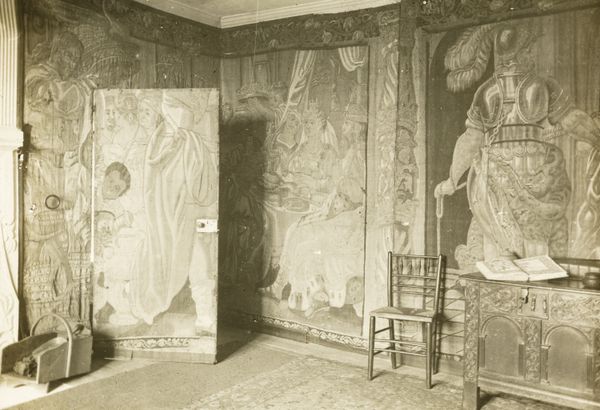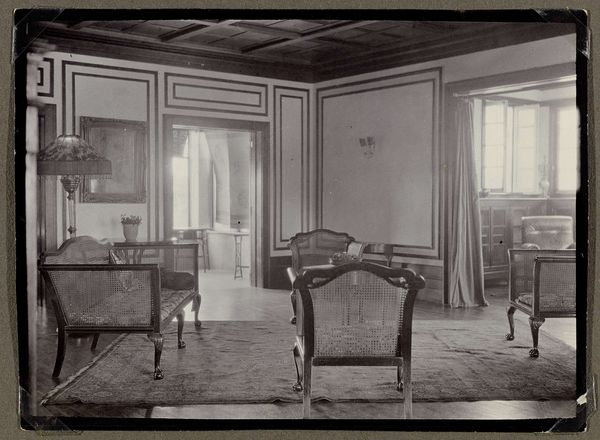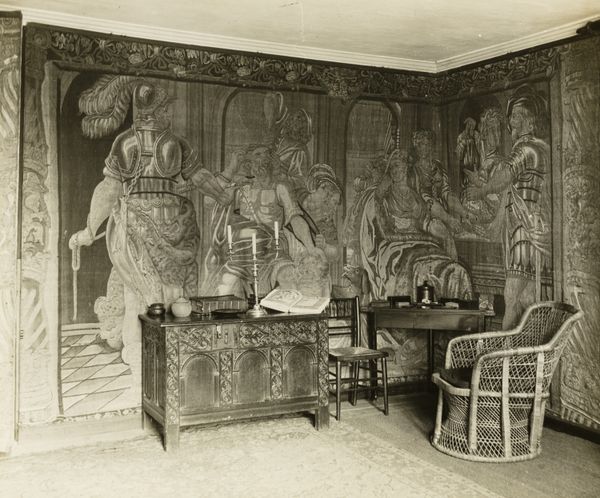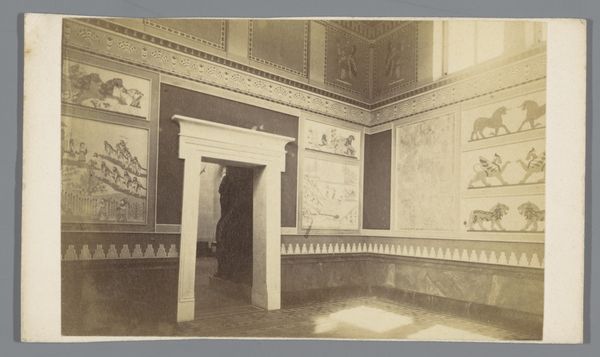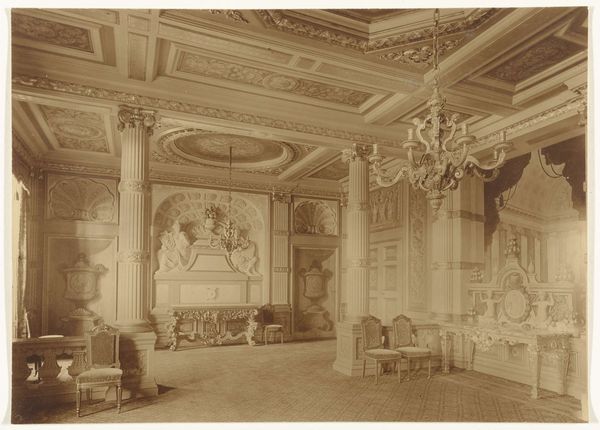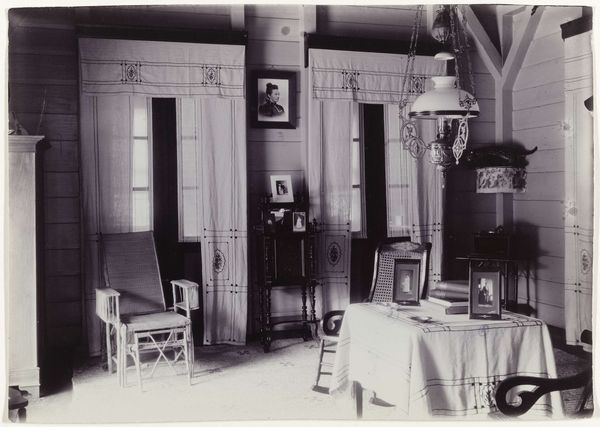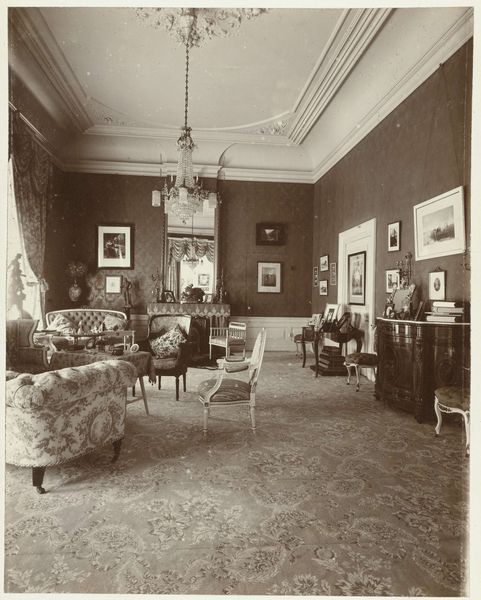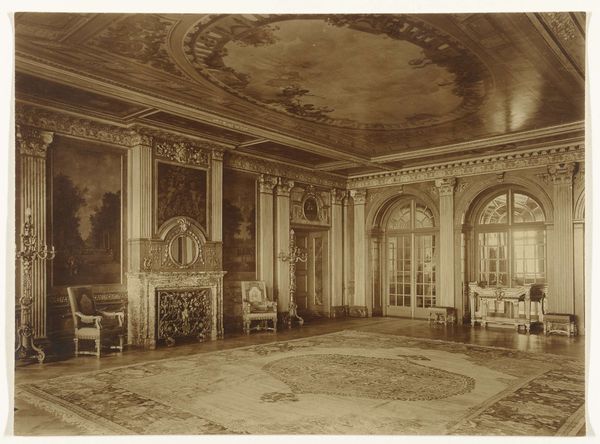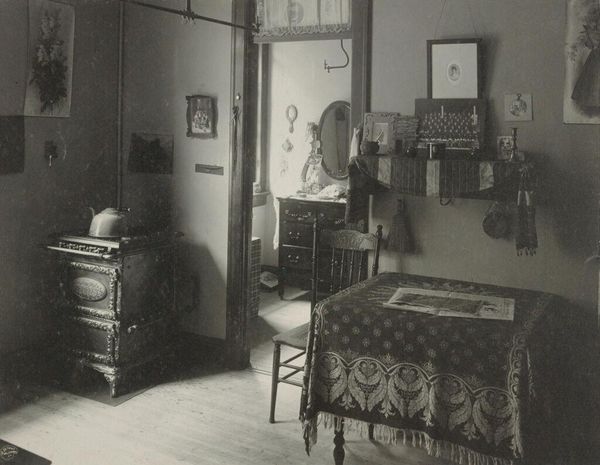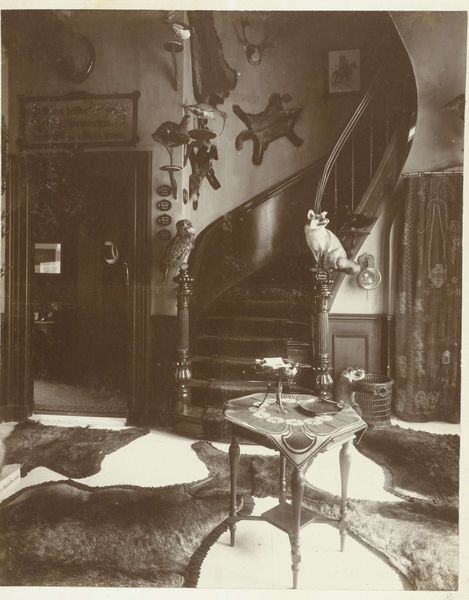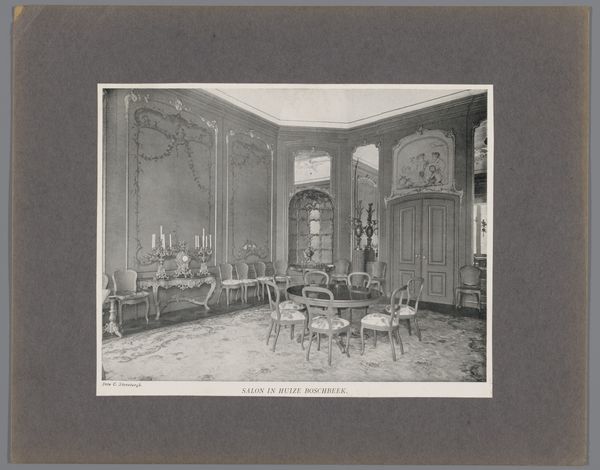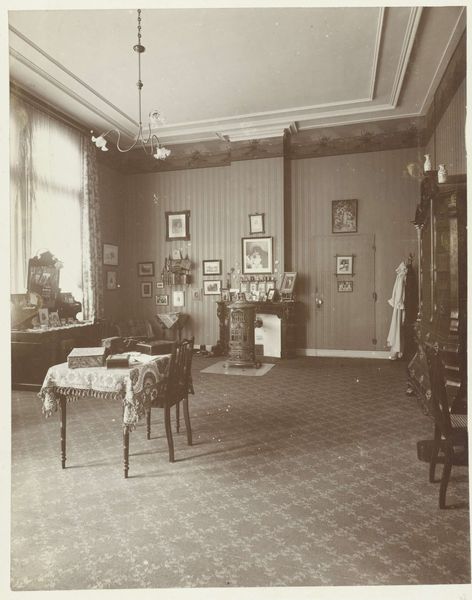
weaving, textile, photography, glass
#
interior architecture
#
interior design
#
art-nouveau
#
16_19th-century
#
pictorialism
#
weaving
#
landscape
#
textile
#
photography
#
glass
Dimensions: 8.2 × 8.2 cm
Copyright: Public Domain
Editor: This is Frederick Evans' photograph, "Kelmscott Manor: In the Tapestry Room," taken in 1896. The grayscale tones lend it an antique feel, but I’m particularly drawn to how the photograph captures the textural contrasts between the furniture and the tapestry itself. What's your interpretation of the overall composition here? Curator: It's crucial to analyze the interplay between light and shadow in this photograph. Note how Evans uses light to reveal the texture of the tapestry, setting it in stark contrast to the smoother surfaces of the furniture. Observe too the repetition of forms – the curves in the chair arms echo those found within the tapestry. These choices demonstrate a considered visual structure. Do you see how this repetition of curves directs your gaze across the image? Editor: I do now that you mention it! The composition does seem very deliberately arranged, everything placed with intention, as if carefully directed on a stage. Curator: Exactly. Let’s consider the function of that large tapestry. Beyond its decorative purpose, how does it affect the space depicted, the distribution of weight, and the formal values within this space? Editor: The tapestry seems to act as a visual anchor, adding depth while flattening the space, doesn't it? Curator: Precisely. Its weight, volume, texture. By foregrounding these elements, Evans invites us to consider the photograph not merely as a depiction of space, but as an aesthetic object in itself, the image as an aesthetic space and interplay between light, form, and texture. Editor: That's a fresh view! It’s fascinating to examine beyond just what is *in* the photograph and more on *how* it is constructed. Thanks for that.
Comments
No comments
Be the first to comment and join the conversation on the ultimate creative platform.
